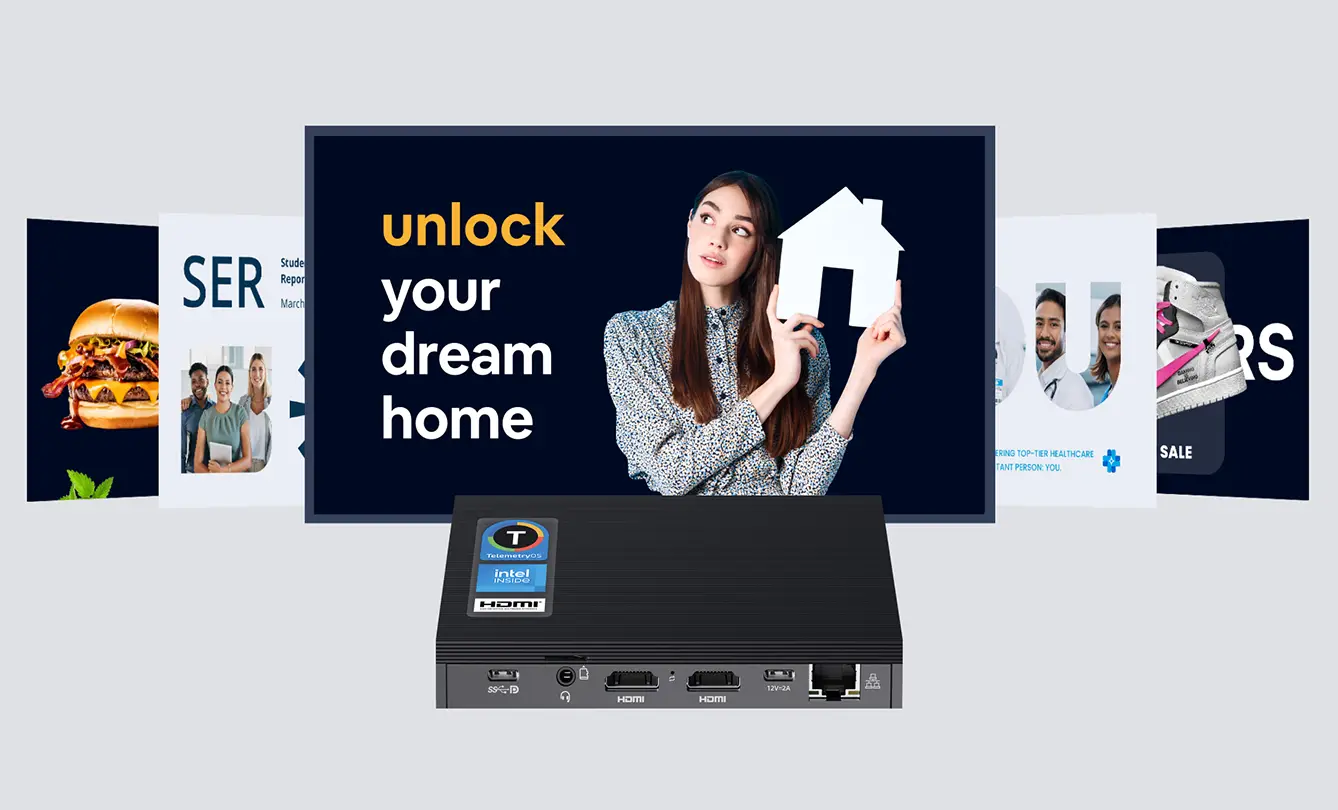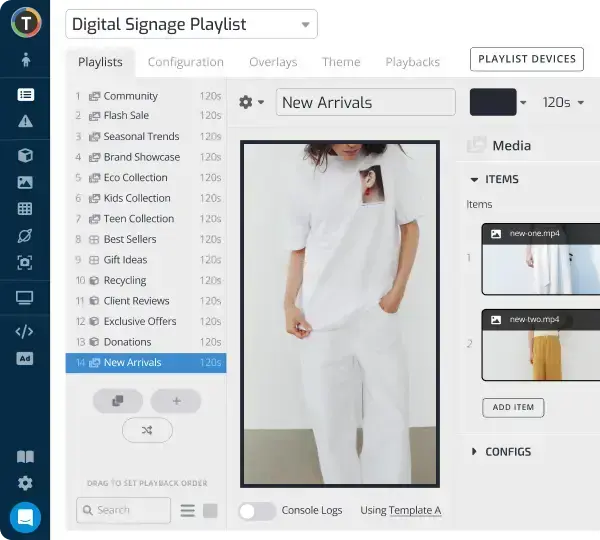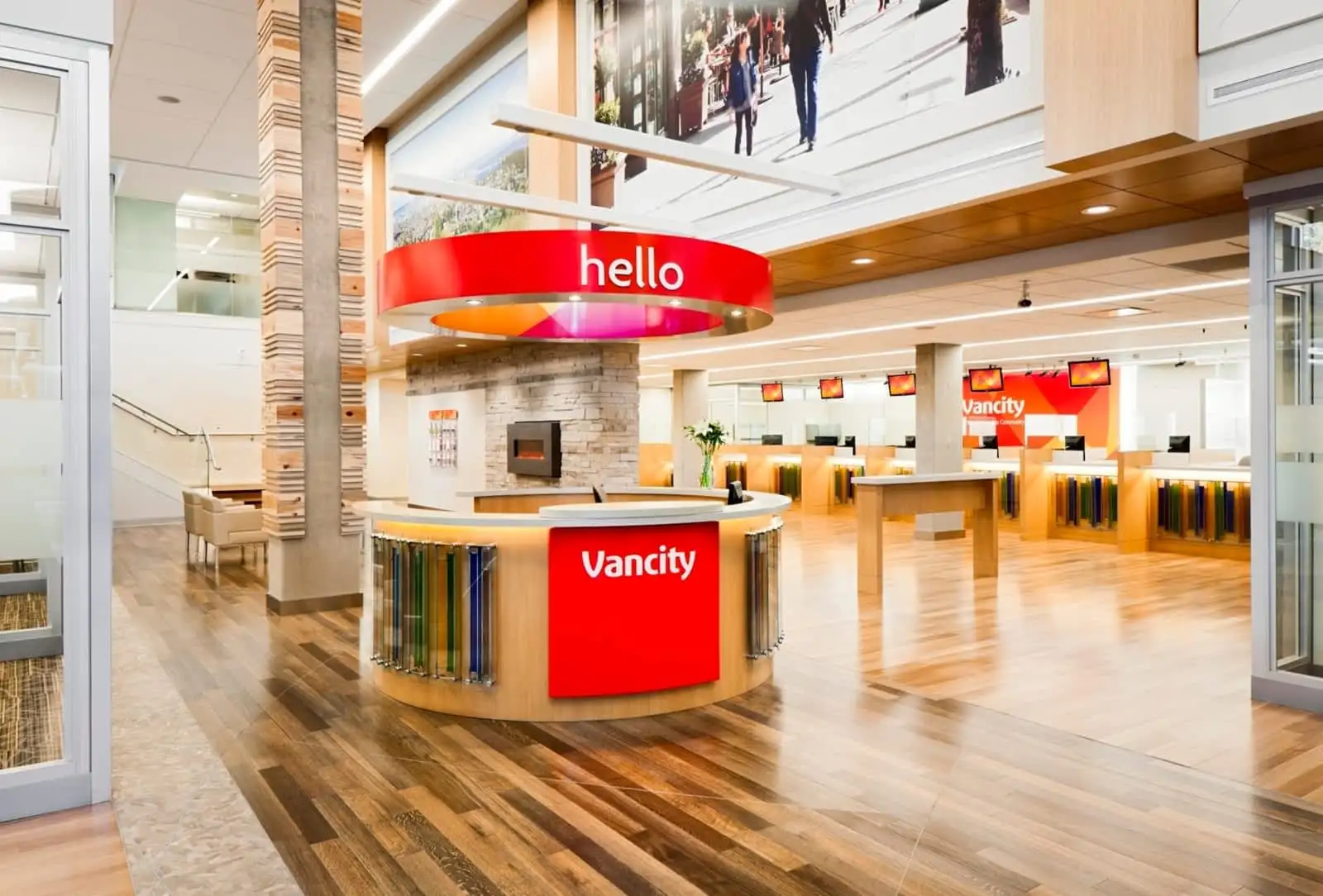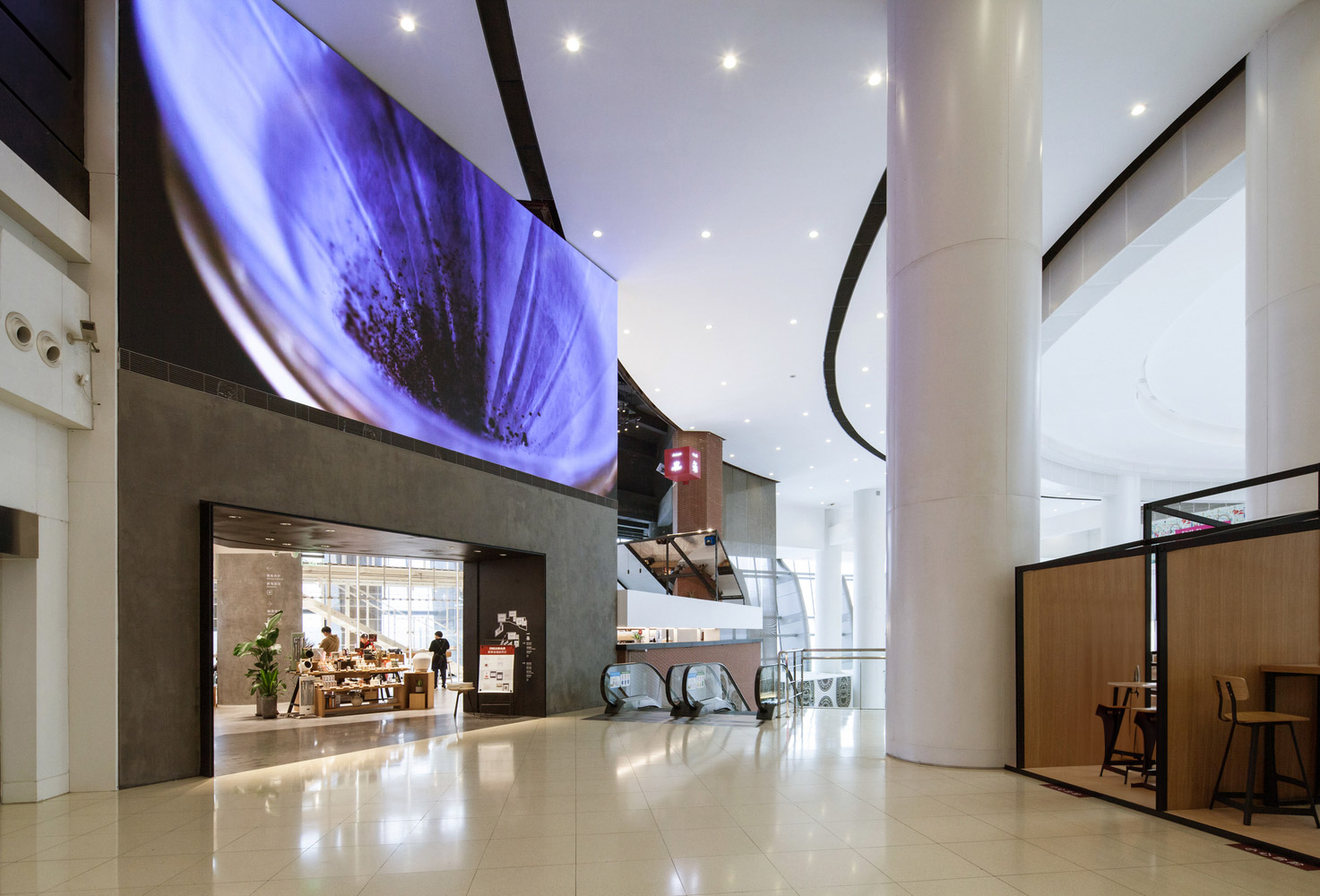Integrating Digital Signage with Existing IT Infrastructure
WRITTEN BY: TelemetryTV, 02-06-2025

Modern businesses rely on a mosaic of technologies—servers, networks, databases, and more—to function efficiently. Yet one element often stands out for its ability to connect people with real-time information: digital signage. When combined with today’s IT systems, digital signage turns static environments into living dashboards, offering up-to-the-minute announcements, data visualizations, and streaming content on displays that can be installed almost anywhere.
This guide explores how to integrate digital signage into your existing IT stack. It outlines best practices for network preparation, security, and device management, along with an introduction to TelemetryTV’s suite of products. Also included is a look at how organizations like a major credit union and a prominent university have used a thoughtful approach to realize the full potential of digital signage.
Key Components of Existing IT Infrastructure
Under most IT deployments, digital signage must coexist with several main elements. Below are four areas where integration tends to be most critical.
Displays and Media Players
At the heart of any digital signage deployment are the screens. These can be standard monitors or large-format commercial panels engineered for around-the-clock usage. Media players, in turn, feed content to the displays. Organizations typically choose between repurposed PCs or specialized hardware optimized for signage. Either way, the media player must handle the multimedia workload—often videos, HTML5 apps, data dashboards, or streaming content—without stuttering or downtime.
Integration Tip: If you already have machines at remote locations, check whether they meet the performance requirements of your chosen digital signage software. Many businesses find that certain Windows or Linux PCs can be reused with little more than a software installation, sparing the expense of entirely new equipment.
Network Infrastructure
Every digital signage player is a node on your network, requiring stable connectivity and sufficient bandwidth for file downloads or video streams. This makes routers, switches, firewalls, and Wi-Fi access points integral to the deployment’s success. A busy network carrying real-time data and enterprise applications must be carefully evaluated to ensure that signage traffic does not degrade other services.
Look for the following:
• Bandwidth Analysis: Evaluate the load contributed by videos, live feeds, or scheduled updates.
• VLAN Segmentation: Place signage devices in a dedicated subnet so that if a player is compromised, it cannot easily reach critical assets.
• Security Rules: Configure firewall policies to balance openness for content retrieval with rigorous protection against external threats.
IPTV and Video Streaming Systems
Many companies already run IPTV for distributing channels or internal broadcast streams. Modern digital signage software can incorporate these feeds into layouts, overlaying text tickers or supplemental graphics to enrich the viewer experience. This setup lets you reuse existing IPTV encoders and decoders while driving more dynamic programming to areas like waiting rooms, cafeterias, or shop floors.
Security and Authentication
No less important is controlling who can publish content and manage devices. Single sign-on (SSO) services such as Azure AD or Okta help standardize authentication across the organization. If your signage platform supports role-based permissions, you can hand content creation to the marketing team, device oversight to IT, and global administration to an executive sponsor—all managed under the same directory policies that protect your corporate assets.
TelemetryTV: A Hardware-Agnostic Digital Signage Software
Among the platforms making inroads with enterprise IT teams is TelemetryTV, a leading digital signage software that operates on a wide range of hardware. Its cloud-based approach eliminates the need for on-premises servers while retaining the security features and integrations companies expect.
TelemetryTV’s ecosystem includes three standout offerings:
• TelemetryTV: A cloud-based digital signage software for scheduling and publishing multimedia across displays. Because it’s hardware-agnostic, you can deploy it on Windows, Linux, or Chrome OS devices you already have. It offers a central console for content updates, system diagnostics, and user access controls—ensuring easy adoption for companies that prefer a remote-management model.
• TelemetryOS Box: The best digital signage player running TelemetryOS—a digital signage-first OS designed specifically for signage. This box emphasizes reliability and security, with streamlined performance for high-resolution videos or animations. By bundling hardware and software, TelemetryOS Box spares you the guesswork of finding a compatible device.
• TelemetryTV Droid-1: An Android digital signage player for more cost-sensitive deployments. Despite its smaller footprint, Droid-1 can handle 4K video and remote updates, allowing you to set up large networks without excessive hardware expenses. This solution fits scenarios where you need to roll out signage quickly and scale with minimal support overhead.
All three integrate neatly with existing IT infrastructures via straightforward network provisioning and an admin-friendly management portal. They allow organizations to unify signage under a single platform, rather than juggling disparate systems or vendor-proprietary devices.
Integration Strategies
Whether you manage a global enterprise or a small network of displays, effective integration demands foresight and attention to detail. Here are four proven strategies.

1. Network Preparation and Security
• Bandwidth Planning: Before rolling out dozens or hundreds of screens, determine the additional load on your Wide Area Network (WAN) or local segments. High-definition video can push bandwidth usage substantially if each player streams simultaneously. Some digital signage software, including TelemetryTV, enables local caching of content, reducing continuous demand. That means only incremental updates get pulled from the cloud, an approach that significantly lowers peak bandwidth usage.
• VLAN Segmentation: It’s best to place signage players on a dedicated network segment, giving them open internet for content retrieval but limiting lateral movement. This approach mitigates risk: even if a malicious actor accesses a signage endpoint, sensitive databases remain off-limits.
• Authentication Integration: Whenever possible, integrate the signage software with your enterprise SSO platform. Users then authenticate with the same credentials they use for other corporate apps. This not only simplifies administration—one password for all systems—but also enforces your existing multi-factor authentication and password rotation policies.
2. Cloud vs. On-Premises Models
• Cloud-Based: A cloud platform, such as TelemetryTV, hosts the management software on remote servers. This offloads the upkeep of patching, data backups, and system scaling to the vendor. Your IT department focuses on device provisioning and network security, while content creators simply log in from any browser. Cloud deployments excel for geographically distributed organizations, offering consistent updates and robust redundancy without the capital expense of on-prem server hardware.
• On-Premises: Some businesses, especially those in regulated industries, prefer to keep data behind their firewalls. While TelemetryTV focuses on cloud architecture, other signage vendors might offer self-hosted options. If you choose on-premises deployment, budget for server hardware, virtualization, and ongoing maintenance. Also ensure your environment can handle traffic surges when pushing updates to many players simultaneously.
3. Leveraging APIs and Automations
Modern digital signage software typically includes application programming interfaces (APIs) that allow your in-house tools or third-party systems to trigger content changes, fetch device status, or upload media. Enterprises often use these integrations to automate tasks:
• Automated Dashboards: Pull operational metrics from a business intelligence platform and display them on key factory floors or breakrooms.
• Emergency Alerts: Hook into existing alert systems, automatically updating all screens when a fire alarm or severe weather notification is triggered.
• Data-Driven Schedules: Link signage to real-time databases—for instance, a display outside a conference room that updates the schedule the moment someone reserves the space.
One major credit union uses TelemetryTV to sync daily currency exchange rates. Each morning, the system triggers a refresh from a central database, updating screens in every branch without manual intervention.
4. Phased Rollouts
An all-at-once approach can overwhelm both the network and the teams implementing it. Many IT leaders advocate for a pilot project at one location or department to validate hardware compatibility, content workflows, and network setups. Once you confirm smooth operation, scale the deployment to other locations with those lessons learned, avoiding repetitive mistakes.
Common Pitfalls
• Insufficient Security Measures: Treat signage endpoints with the same rigor as corporate laptops or servers. A compromised media player can provide a backdoor into more sensitive systems if not properly firewalled and updated.
• Overlooked Network Constraints: Too often, organizations assume their current infrastructure will handle added bandwidth demands. Early testing and real data on streaming usage help prevent slowdowns or dropped connections in production.
• Poor Content Governance: If every department can push media to every screen, chaos ensues. Structure permissions to reflect your organization’s hierarchy. Ensure content managers keep visuals consistent with brand guidelines, and plan a review process for new material.
• No Plan for Scalability: Hardware that handles a handful of screens might struggle when you expand to hundreds. Confirm that both your chosen digital signage software and your hardware roadmap will accommodate future needs.
• Ineffective Training and Handoffs: A system is only as effective as the people managing it. If content creators and IT specialists do not receive proper training, screens might remain outdated, undermining the entire investment.
Case Studies: Large-Scale Deployments

Organizations across industries have found success by weaving digital signage into their existing IT environment. Below are examples of high-impact rollouts.
Vancity Credit Union
A prominent financial institution with over 50 branches, Vancity needed to modernize in-branch communications. Their key requirement: an easy-to-deploy, cloud-based digital signage software that integrated with existing Windows PCs. After testing multiple solutions, they installed TelemetryTV on the hardware they already owned. This minimized costs and allowed rapid rollout.
Bandwidth Management: Vancity used TelemetryTV’s caching capabilities so that video and large media files were downloaded overnight rather than in the middle of daily ops. This scheduling approach kept bandwidth usage in check.
Security and Monitoring: Signage devices were placed behind secure firewalls, with only necessary ports open for media retrieval. The IT team leveraged automated alerts from TelemetryTV to detect offline screens. This integrated well with their existing network operations center, offering a single source to pinpoint issues across dozens of branches.
Outcome: Vancity drastically reduced the time needed to publish updated loan rates or corporate announcements. Their marketing department could log in from any browser, schedule new promotions, and push them out across multiple regions. Meanwhile, the IT staff saved hours of manual upkeep each week thanks to centralized device management.
Stanford University’s School of Medicine
A large academic institution like Stanford Medicine handles complex internal communications, from research updates to student events. The School of Medicine embarked on a project to unify these messages on strategically placed screens. Initially, they tested the feasibility of a cloud-hosted digital signage network, concerned about security and reliability.
Integration with Existing Systems: Stanford tapped into TelemetryTV’s open APIs to display room schedules and lab metrics. Access controls were tied into the university’s single sign-on, preventing users from hijacking a screen.
On-Campus vs. Remote Access: Because Stanford’s network security is stringent, their IT staff worked closely with TelemetryTV to whitelist content domains and implement VLAN segmentation. Once configured, the system automated updates to dozens of screens without requiring manual, location-by-location management.
Outcome: Faculty reported that event attendance improved after introducing real-time announcements in public spaces. Department administrators found it simpler to broadcast key deadlines and campus alerts. The project underscores how even a regulated, high-security environment can adopt cloud-based signage if networking and authentication are thoroughly planned.
Practical Next Steps
• Map Your Environment: Inventory your displays, evaluate power and location constraints for each new screen, and confirm media player performance requirements.
• Engage Your IT Security Team: A signage device is another entry point on the network. Work with cybersecurity experts early to define segmentation policies, firewall rules, and patching schedules.
• Pilot, Then Expand: Start small: deploy at one branch or department to validate everything from content scheduling to user permissions. Roll out in stages to avoid bandwidth overload.
• Plan for Continued Training: Give content managers an onboarding session and keep user documentation updated. Encourage a practice of refreshing screen content routinely.
• Evaluate Results: After a few months, compare your original objectives with performance metrics. Is employee engagement up? Are IT support tickets manageable? Use these insights to refine your approach.
Conclusion

Digital signage can be a powerful extension of the typical IT environment, leveraging existing network capacity, security infrastructure, and authentication services. An integration strategy that reflects your organization’s size, technical needs, and security standards will transform flat screens into vibrant communication hubs.
The ultimate goal of any digital signage project is to keep stakeholders informed and engaged. That means real-time updates, visually compelling graphics, and a system that doesn’t break the bank—or break the network. With a thoughtful integration plan, proven tools, and best practices, organizations can ensure digital signage becomes a long-term asset rather than an operational burden. As technology advances, the line between signage and other enterprise systems will continue to blur, heralding an era where displays are as vital as email and cloud platforms—essential touchpoints for both internal teams and customers alike.
TelemetryTV: Integrate Digital Signage with IT Infrastructure
TelemetryTV’s hardware-agnostic digital signage platform supports major OSes and devices like TelemetryOS Box or Droid-1, lowering adoption hurdles. Its cloud-based approach cuts overhead, letting IT focus on security and content.
Start for FreeVisual Communication. Everywhere.
Get started for free. No credit card required.











